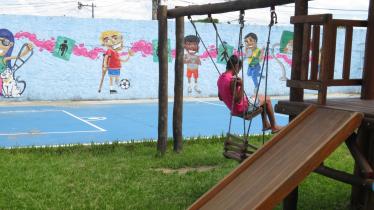
September 23, 2018
Sign language is an essential tool of communication for tens of thousands of deaf and deafblind people around the world. But in some places, barriers to the use of sign language mean that many children and adults who are deaf or deafblind are deprived of communicating with others, and, therefore, from enjoying many of their rights, including to education and work.
Over the last two years, I witnessed many of these cases in Brazil.
Many people with disabilities in Brazil live in institutions for long periods of time, some for their entire lives. All the deaf and deafblind people I met in residential institutions in Brazil were unable to use sign language. They were never taught sign language and were unable to meaningfully communicate with the institution’s staff, other residents, and the outside world.
The staff at these institutions wrongly claimed that deaf and deafblind residents, as well as other people with “severe disabilities,” could not be educated. But examples around the world show that by learning sign language, deaf and deafblind people can find access to education, professional development, and political life.
Moreover, governments and organizations around the world should consider opportunities to include sign language in their materials. This would allow deaf and deafblind people access to information. For example, Human Rights Watch recently edited a video about people with disabilities living in residential institutions to include Brazilian sign language on the screen. We showed it at an August session of Brazil’s National Council for Persons with Disabilities in Brazil (CONADE).
Language should be inclusive to everyone and using sign language more often can help us ensure everyone understands. On the International Day of Sign Languages, it’s important to remember that without education and inclusion, we’re missing out on the valuable contributions all people with disabilities can make to society.
